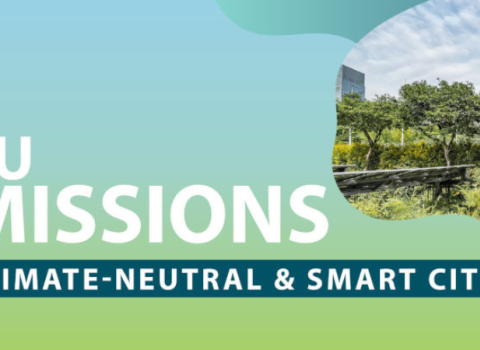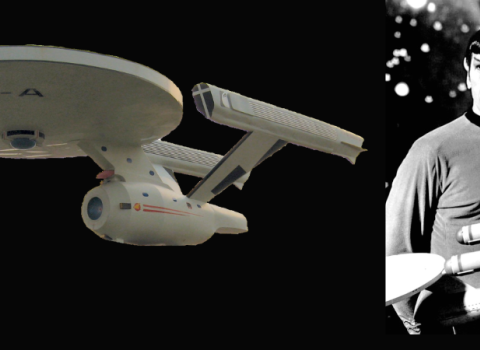‘Cancer has evolved and we need new tactics to match it,’ says research commissioner

EU research commissioner Carlos Moedas
EU politicians are eyeing up a large and targeted programme of research – or moon shot - to inject more urgency into the development of new and more effective cancer therapies. The goal, they say, is to aim big, be inventive, and get things done.
Veterans of cancer research say the objective requires a vast multi-pronged attack and a huge amount of money.
Here are some of the things we know about the developing plan.
Why cancer?
With more people surviving into old age, cancer rates are climbing everywhere. Europe has less than 10 per cent of the world’s population but over a quarter of all cancer cases. Cancer now kills 1.9 million people a year in Europe, according to World Health Organisation data. By 2030, there will be over 22 million new cases of cancer a year – almost double the amount in 2012, according to the International Agency for Research on Cancer. The most common cancers in Europe are breast, followed by colorectal, lung and prostate cancer.
What are the ingredients of a mission?
EU research commissioner Carlos Moedas has pitched the mission as a catalyst to bring breakthroughs to patients faster. “Cancer has evolved and we need new tactics to match it. We need the scale and the critical mass at the EU level, to give it our best shot. We want to set an inspirational goal, to direct our research efforts towards a concrete objective,” the commissioner said.
The mission, in the European Commission’s current thinking, should be ambitious, even risky, but also achievable. The archetypal model is US president John F Kennedy’s pledge, in 1961, to send a man to the moon and return him safely (this mission was accomplished eight years later).
In the EU view, a mission-based approach must be clear about the expected outcome. However, the trajectory to reach this endpoint should not follow a single path, or use a single technology. Missions need a clear timeframe – long enough to allow research to mature, while at the same time having a delivery date. Crucially, it must be possible to say definitively whether the mission has been achieved or not. The mission would involve a range of financing – including grants, prizes, and financial instruments.
Progress against the disease could be much faster if scientists had the means and the disposition to work closely together, Moedas says. The mission would break down the barriers between academic disciplines, between different drug companies, between drug companies and researchers, and between all of them and the EU governments. “Focusing on oncologists is no longer enough for cancer treatment. We need oncologists, nutritionists, economists and the patients themselves. We should leverage the European networks we have already on cancer,” the commissioner says.
How much money?
The budget for a cancer mission would be big. Moreover, it would require decisive political leadership – not just from the European Commission, but from every member state – to bring together disparate parties.
As yet, no budgets have been assigned for the developing EU research missions. Discussion as to the size of any cancer moon shot will be part of a broader negotiation on the overall shape of the EU’s Horizon Europe research programme, running from 2021-2027. Alongside cancer, other similarly ambitious proposals are being scrutinised, including plans to limit plastic pollution in the oceans and to build the world’s first quantum computer.
Calculating how much the EU already spends on cancer research is complicated, because so much expenditure is tucked into so many budgets. The Commission says that, under Horizon 2020, its current seven-year research programme, it has paid out €1.2 billion for 980 projects so far. A mission would require at least this much funding, researchers say.
Christian Ehler, one of the lead drafters on the next research programme for the European Parliament, has said a bigger overall research budget would be required to do a mission properly. If the budget of Horizon Europe is no bigger than the proposed €94.1 billion, “You don’t see missions. At €125 billion you can see missions, at €160 billion you can start to fight Alzheimer’s,” Ehler has said.
In the costly world of biomedical research, researchers will question the impact that amount can really have. One thing is certain: it will need to be precisely targeted.
Where should the money go?
Drawing up a cancer battle plan in Europe would involve tough choices on where funding is targeted.
An early proposal by the Commission was to focus resources on childhood cancers (An internal document last year set out the following goal: “Beating Cancer: curing paediatric cancer by 20xx.”). But since then, the plan has morphed, and politicians now talk about addressing cancer more generally. Several member state delegations involved in negotiating missions are understood not to want to set broad cancer goals. Unless the target is specific, they argue, it would not be anywhere near achievable.
However, most agree the plan requires a vast multi-pronged attack. “It's about early detection, treating side-effects, and keeping patients active,” Moedas says. Others argue that the focus should be on getting people to stop smoking and eat healthily.
Researchers are unanimous on one thing: a major thrust of any EU cancer plan has to be more sharing of patients’ data.
Why is sharing data important?
Cancer experts agree that better coordination on data is a medically sound way of tackling the disease. There many troves of such information, but few mechanism for combining them.
Rare diseases, including rare cancers, affect up to 36 million European citizens. “But meaningful research cannot begin without a critical mass of patient data. And it is simply not possible on a member state level,” Moedas says.
The commissioner says researchers need access to more central resources, including virtual networks linking databases, patient registries and biobanks.
Removing barriers for data sharing across the borders “would be a significant help,” agrees Emile Voest, medical director of the Netherlands Cancer Institute. “Imagine the power of a database of all European cancer patients, clinically annotated and with biomarker information,” he said. “This may help to identify patients early on when a cure is a possibility, and help to refine patient selection for treatment.”
Moedas says he wants to see more apps for cancer. “I know a phone will never replace an MRI machine. But apps are being developed that have amazing potential. Apps that help with early detection, create care plans, help us manage side-effects. Putting cancer treatment literally into the hands of patients empowers them,” he says.
What are cancer research veterans saying?
Specialists are keeping their feet on the ground: a mission is not going to find the ultimate cure, they say.
Progress will continue to be incremental; controlling cancer is an “extraordinarily broad and complicated endeavour – so sights ought to be narrowed to focus on a few problems,” said Harold Varmus, Nobel-prize winner and former director of the US National Cancer Institute and the National Institutes of Health.
There are the early signs of jostling for involvement in the mission between the innumerable organisations and institutions that make up the cancer community in Europe.
First out of the gate is an association of seven European cancer centres, called Cancer Core Europe, which argues that they are the “ideal engine” for the cancer mission. The group consists of the Cancer Research UK Cambridge Centre; the German Cancer Research Centre and National Centre for Tumour Diseases; Gustave Roussy; the National Tumour Institute of Milan; the Karolinska Institute; the Netherlands Cancer Institute; and the Vall d’Hebron Institute of Oncology.
In a recent paper, the group argues that, “Clearly a lot of work needs to be done to have a successful integration of the different components of a mission on cancer. Such an integration will need collaborations with a variety of networks. The uniqueness of Cancer Core Europe makes it the ideal ‘engine’ for a mission on cancer.”
The cancer moon shot plan is getting the backing of Manfred Weber, the German MEP who is an early contender to succeed Jean-Claude Juncker as European Commission president in late 2019. On his website, Weber says, "I want Europeans to be the first ones to cure cancer. Imagine if we would combine all our resources, knowledge and databases." His goal is to double the amount the EU spends on cancer research. He elaborated on that goal at his formal campaign kick-off 23 April.
Elsewhere, politicians standing in the upcoming European elections are being asked to get behind a manifesto that aims to help tackle the disease. It sets out a list of demands it wants the new Parliament to address after the elections in May, including improving access to high quality cancer treatment and to implement measures designed to reduce harmful occupational and environmental exposure to carcinogens.
Would the EU plan be similar to the US Cancer Moon shot?
Researchers are not sure to what extent an EU effort should be modelled on the US Cancer Moon shot. In 2016, 45 years after president Richard Nixon’s “war on cancer”, president Barack Obama announced the moon shot, with the then vice president Joe Biden at its head. It is a personal mission for Biden, who lost his son Beau to brain cancer at the age of 46.
This initiative is injecting $1.8 billion into an orchestrated programme of research that has the aim of achieving in five years what would otherwise have taken a decade.
Roger Appelqvist, a researcher and one of the leaders of Lund University’s moon shot team, which is involved in projects run by the US initiative, says, “Copy the US concept and tear down the walls between research groups. Don’t have the attitude that ‘this is mine, this is yours’.”
But other researchers doubt Europe could – or should – adopt the US approach. “We’re not a federation like the US. There are different rules and regulations across EU countries so it’s overall more complex,” said Sakari Karjalainen, secretary general of the Cancer Society of Finland. “But it’s certainly possible to copy the ideas and principles of the US initiative.”
What if the EU plan fails?
The highly ambitious and trumpeted US government “wars” of the past (against poverty, against cancer, against terror) largely fall short. Would an EU mission fare any better? Perhaps not, but even in failure, there is the possibility for unexpected and positive results, Moedas says. “Some people are sceptical. They think that if the mission fails, all of our efforts are wasted. I think that's short sighted.”
“Nixon is often criticised for failing to find a cure for cancer. But the scientific discoveries that were made as a result of this mission led the way to breakthroughs in other fields, such as treatments for HIV,” he says.





 A unique international forum for public research organisations and companies to connect their external engagement with strategic interests around their R&D system.
A unique international forum for public research organisations and companies to connect their external engagement with strategic interests around their R&D system.